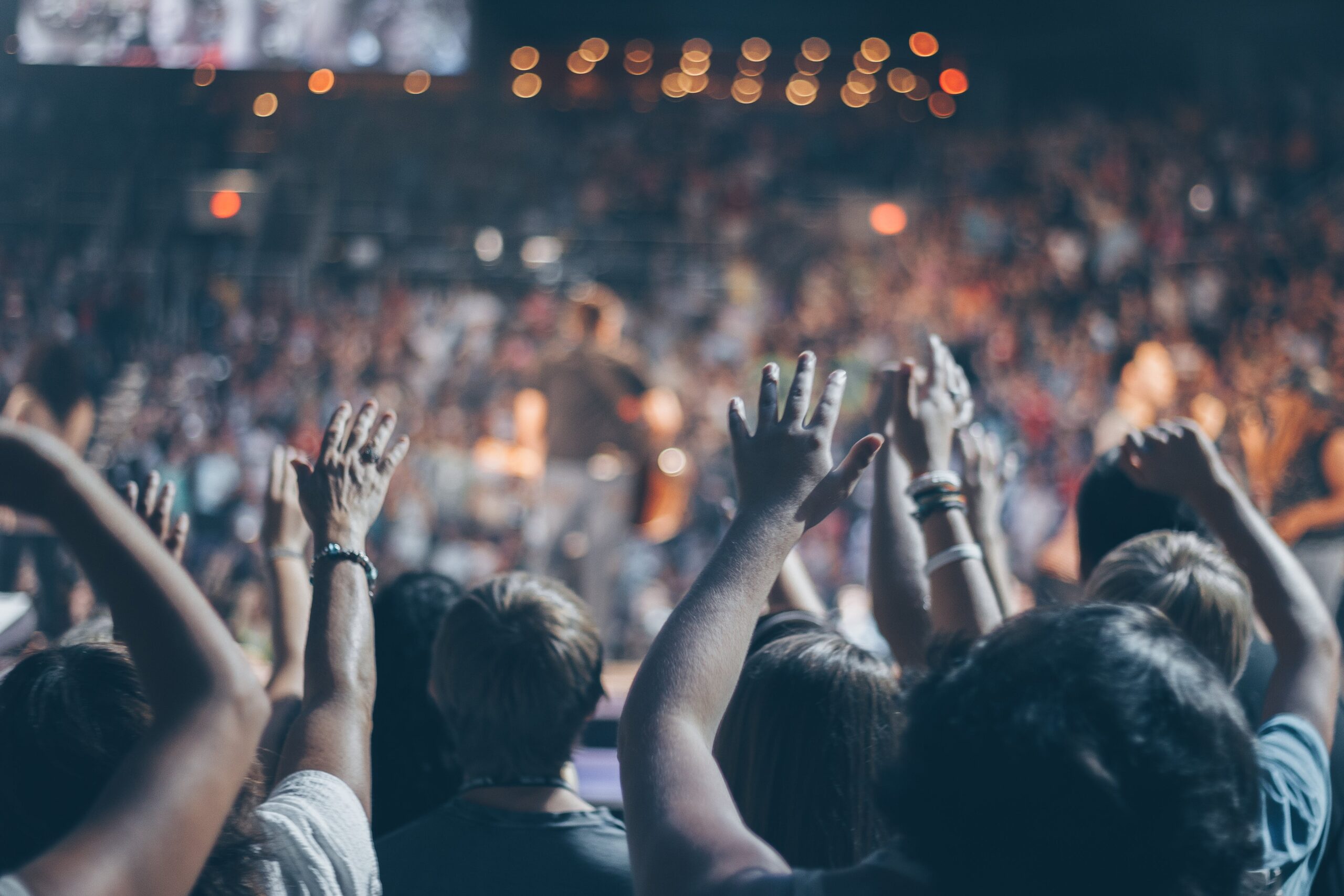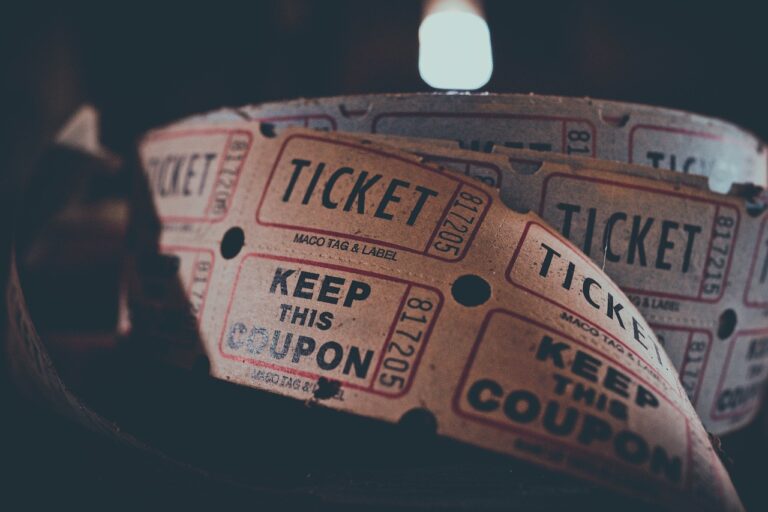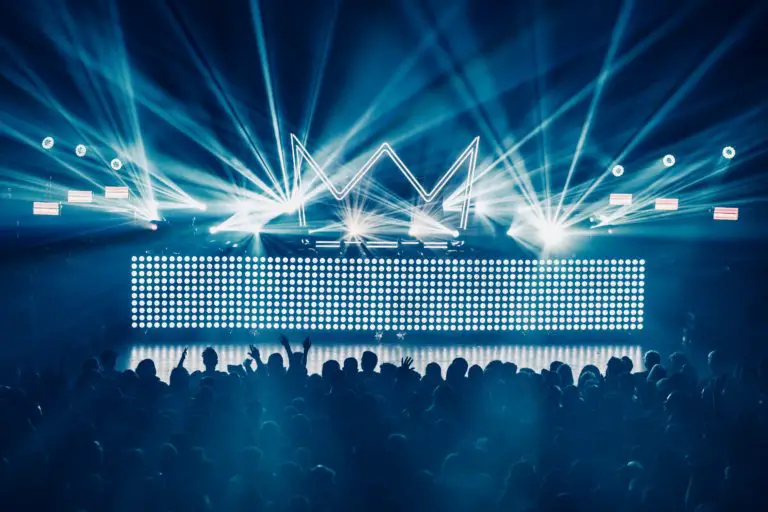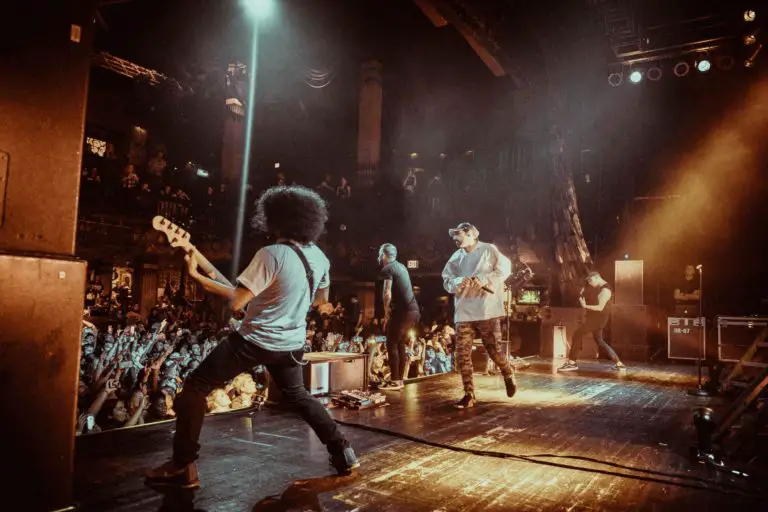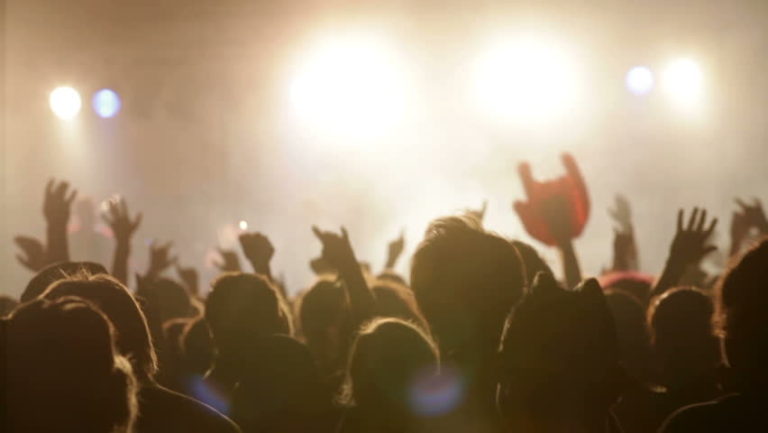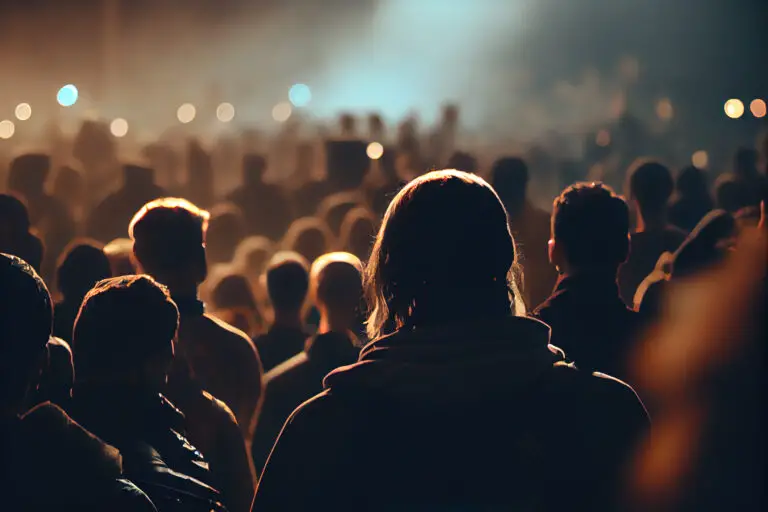What Are Concert Crowds Like?
Concert crowds define the feel and atmosphere of a show. They set the tone for the entire evening and the energy felt in the room.
Concert crowds can vary from show to show. They depend on several factors such as the pe of the event, the genre of music, and the general feeling and emotions of the individuals that night.
Having this knowledge helps you prepare for all sorts of aspects when going to a show. It’ll tell you what to look out for and how you might add to the energy
It also helps you avoid trying anything that upsets the balance of the night and even ruins the experience altogether.
What Is Concert Crowd Energy Like?
Going to live shows is something no one can fully prepare for. It’s a feeling that can’t be replicated just by listening to an album.
“Live music offers intense experiences that are shared with others”, remarks Dr. Dana Swarbick, Doctoral Research Fellow at the University of Oslo’s RITMO Centre for Interdisciplinary Studies in Rhythm, Time and Motion.
It is something that Dr. Swarbrick knows all too well, dedicating much of her studies to looking at how concert crowds act and feel at shows across many genres of music.
One such example was how crowds react to live music compared to the recorded version of the tracks. The natural energy of live crowds was clear to see, as her study noted the increased head movements at a rock show compared to just listening to the album itself.
“Music naturally evokes movement in listeners through the process of rhythmic entrainment. Live music can enable audiences to become more absorbed in the music and lead to coordination of movement with others which can promote bonding.”
It’s this sort of energy that hits any music directly when going to a show, and one that first-time concertgoers might not have felt before. So anticipating what concert crowds might be like is difficult until the lights go out.
How Genre Impacts Concert Crowds
Much of what concert crowds are going to be like will be influenced by the genre itself. Genres often come with distinct music communities and fandom within. These different groups all have their unique ways in which they behave and act. But how does this differ from genre to genre?
Rock & Metal Gigs
Rock and metal crowds are just like their music. Rough, rowdy and generally ready to raise the roof to the highest level.
And that’s not just through amps being cranked up to 11. It comes with crowds that are generally active and engaging very much with one another. How? Well, by actively jumping around to soaring choruses or moshing within heavy breakdowns.
To the untrained eye, it might look like chaos, but it’s something that most rock or metal fans expect at a show. Indeed, understanding and accepting it comes as a natural aspect to these fans.
It’s a thought not lost on crowd behaviour analyst Dr Anne Templeton, Senior Lecturer of Psychology at the University of Edinburgh.
“Actions are a way of participating in the way of celebration with others around you who feel the same way you do,” she explains. “They show you too are a group member and enjoying the event.”
It’s why mosh pits – that might seem violent to outsiders – have become one of the most expected and anticipated moments at any rock show.
“It’s one thing moshing along to a song alone in your living room. But moshing with others is infinitely more fun and helps to connect with fellow fans’” Dr. Templeton adds.
Classical Shows
But don’t expect every music show to be boisterous like a rock show. Classical music concerts seem a world away from their heavy metal counterparts. Especially when you see what concert crowds are like in this more refined setting.
But the silence and appreciation for the music here is no less than at other show types. The laid-back nature and lack of movement come as part of the show. At least until the end of each composition or piece when the crowd applauds their efforts
This stark contrast is something that Dr. Swarbrick has noticed and compared before. Yet she notes that it doesn’t mean audiences aren’t having a good time.
“Even if a concert audience isn’t moving, they may be exerting active control over their bodies to sit still to show they are engaged by a classical concert,” she says.
“This motion and stillness can lead to feelings of connectedness among an audience when the audience behaves in musically cooperative ways.”
It shows that despite being in a more refined atmosphere, there’s still a shared appreciation for the artists amongst the audience. Even if it might not seem like it to those used to a more active crowd type.
Pop Shows
Surprisingly, pop shows fall somewhere in the middle of the spectrum of music diaspora. It’s a place where fans want to engage with their idol’s music, but also see their hero in action.
It is here where crowds show their most united cause – a love for the performer they are seeing.This creates a bond that others share even if they are next to strangers.
It’s a feeling not lost on Dr Templeton, who has seen this in abundance, citing Beyonce’s “mute challenge” and Lady GaGa’s fans “putting their paws up” trends.
“Fans look forward to these moments and they are a unifying moment for attendees,” she remarks. “It shows they are true fans because they know what’s coming and are surrounded by fellow fans who feel the same”
It’s even an atmosphere that sparks organic original movements within the community. Something that Dr. Templeton has spotted particularly within the Taylor Swift fandom is how fans link together in certain ways.
Some of these examples have included Swift fans making friendship bracelets from song lines, costume designs and originating new chants at the Eras Tour.
“These have become so established as key points of events that fans still use these even from previous tours,” Dr Templeton discusses.
All of this shows how concert crowds connect and engage in a show – even if the genre and artists may be completely different.
The Unique Festival Setting
As good as being united by one artist can feel, it might be a different aspect when heading to a music festival.
Music festivals are not always going to be directed towards one artist or genre. Sometimes, they can cater to audiences spanning many different genres and scenes. So what are concert crowds like in this mixed setting?
Thankfully, crowds in this setting are just as united despite their differences. Many might be there just to feel the unique clash generated in a festival atmosphere.
This atmosphere is something that often can’t be replicated at any indoor show. It’s something that has been noted by Dr. Templeton. She believes festivals “bring together people of a range of music tastes to enjoy the festival atmosphere.”
“People come together under a broader common social identity of being a festival-goer or music lover. Overall, there’s a sense of unity with others,” she added.
Seeing a much broader audience at larger festival shows also adds to the buzz generated by a live music audience. This is a feeling noted by Ms Swarbrick, “live music is important for fostering social connectedness amongst audience members.”
It is something that makes festivals a unique place to be and for everyone to enjoy as they unfold. And it doesn’t matter if fans might be exposed to unusual elements such as new music genres or even getting caught in the rain!
Final Thoughts
At the end of the day, knowing what concert crowds are like comes back to a common feeling: hearing your idols play the songs you love.
It brings together fans of all backgrounds and personalities to one spot to hear songs they enjoy. No matter if you’re bouncing in mosh pits or sitting in a symphony, the platform is still the same. You are there for the love of the music.
It’s a common unity that binds people together and engages them as one, even if tens of thousands might be in an arena.
It is what makes being in a live setting that much more electric. And it’s why you can never truly feel what concert crowds are like until you are there yourself.
References
Swarbrick, D., Bosnyak, D., Livingstone, S. R., Bansal, J., Marsh-Rollo, S., Woolhouse, M. H., & Trainor, L. J. (2019). How live music moves us: Head movement differences in audiences to live versus recorded music. Frontiers in Psychology, 9(2682), 1–11. https://doi.org/10.3389/fpsyg.2018.02682
Swarbrick, D., & Vuoskoski, J. K. (2023). Collectively Classical: Connectedness, Awe, Feeling Moved, and Motion at a Live and Livestreamed Concert. Music & Science, 6. https://doi.org/10.1177/20592043231207595
Special thanks to Dr. Dana Swarbrick & Dr Anne. Templeton

